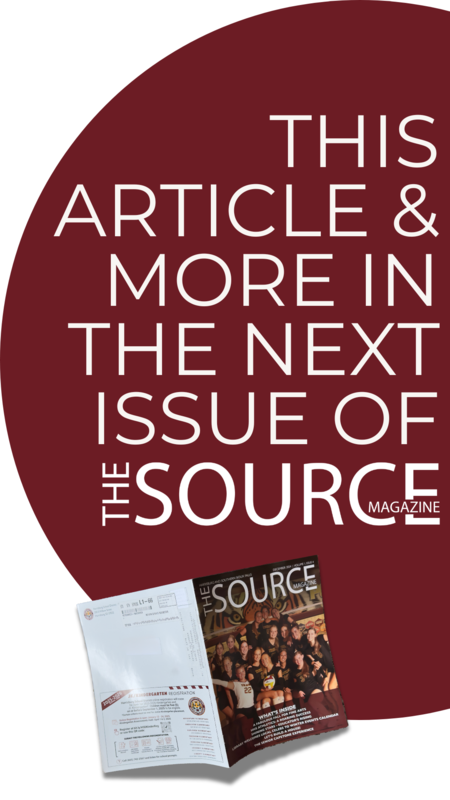Th e Harrisburg School District has experienced remarkable growth over the past 20+ years—696% enrollment growth since 2001, to be exact—making it the fastest-growing district in South Dakota. The City of Harrisburg has now reached 10,297 residents in 2025, up from fewer than 1,000 at the turn of the century, while sixty-six percent of the district’s population resides in Sioux Falls.
e Harrisburg School District has experienced remarkable growth over the past 20+ years—696% enrollment growth since 2001, to be exact—making it the fastest-growing district in South Dakota. The City of Harrisburg has now reached 10,297 residents in 2025, up from fewer than 1,000 at the turn of the century, while sixty-six percent of the district’s population resides in Sioux Falls.
With that kind of rapid, sustained growth, one thing is clear: facilities must grow with the students they serve.
You Can’t Build Old Schools
Over the past two decades, the district has added an average of 231 students per year. To keep up, Harrisburg has built nearly one new building every two years, a pace that has been essential—not optional. Recent enrollment numbers indicate that grade enrollment levels appear to be leveling off, but continued monitoring and planning remain critical to ensure the district stays ahead of future needs. New housing developments continue to be constructed throughout the district, and we must be prepared for the additional families and students they will bring, ensuring students have the space, resources, and support they need to learn and grow.
We build the schools our students need—when they need them—ensuring capacity, opportunity, and a strong learning environment for every learner who walks through our doors. Without these investments, the district would be over capacity and under-resourced.
Strategic Planning, Purposeful Phasing
When the need to expand high school capacity became evident, the district took a phased approach designed to serve students now—without overburdening taxpayers.
Rather than immediately building a second 9–12 high school, HSD proposed a more efficient solution: a Freshman Academy, built as Phase 1 of a long-term plan. The Freshman Academy provides space and flexibility while preserving the strength of our academic and extracurricular programs.
The Freshman Academy was designed in a way to transition into a second full high school when enrollment truly demands it—projected around 2,200–2,400 students—at a time when some existing bonds will be paid off, and will allow for expansion without increasing the tax levy. It was the right plan at the right time and has proven to be a success providing our Freshmen with the opportunity to come together from the three middle schools and grow together before transitioning to the main campus. This approach was approved by voters in June 2021 as part of a bond that also included a new middle school to address overcrowding in grades 6-8.
Growth Without Raising the Tax Levy
Despite ongoing construction and expansion, HSD has maintained a level tax levy for over 20 years and has even decreased by over 10% the past couple of years. That’s thanks to a growing tax base, strategic timing, and strong fiscal management.
“The growing tax base in the community and the fiscally responsible District spending has allowed HSD to stay ahead of growth and maintain a level tax levy,” said Superintendent Tim Graf. “Current and past school boards have made a commitment to a level tax levy, which has remained constant throughout the past two decades before actually decreasing the past two years.”
It’s important to understand that recent increases in property taxes are largely the result of rising home values and assessments rather than an increase in the school district’s tax levy. As property values across the region continue to climb, assessed valuations go up, and so do individual tax bills—even when the levy stays the same. That’s a system-wide issue, and South Dakota has work to do to address the inequities in how property taxes are collected and distributed.
How School Funding Works
In South Dakota, public schools like those in the Harrisburg School District are funded through a combination of local property taxes and state aid—but unlike many other states, South Dakota does not collect personal or corporate income taxes to support public services like education. This means the state relies heavily on property taxes to fund schools. Each year, the state sets a target funding level. To fund education, the state also sets a general fund mil levy that generates local property taxes— referred to as the local effort—and the state covers the shortfall.
Therefore, even though tax rates (mill levies) have gone down, property tax bills continue to rise—driven almost entirely by the increasing value of homes, not by school district tax increases.
For example, if the funding level amounts to $7,450 per student and the local effort raises $3,240 per student from local property taxes, the state adds $4,210 to fund the formula. This system helps ensure that students across South Dakota—wherever they live —have equitable funding.
The State Education Funding Formula applies local taxes first, and the state covers the remaining amount. Regardless of how much the local taxes contribute, the district’s total funding remains the same.
Why Your Tax Bill Might Be Rising
Here’s the part that’s confusing for many homeowners: even when the school tax rate or mill levy stays the same or drops, your bill can go up. Why? Because of rising property values. These rising valuations do not give the schools more general fund revenue but they do reduce the state’s obligation or share of the formula.
Over the past several years, Harrisburg and the surrounding area have seen a sharp increase in home values. If your house is assessed at a higher value, your tax bill will reflect that—even if the school mill levy has dropped.
The South Dakota Education Funding Formula (below) calculates a district’s total funding need based on student enrollment, teacher salaries, benefits, and overhead costs. Local taxes cover part of this need, and the state provides the remaining funds to ensure schools have the necessary resources.
This infographic provides a simplified approximation of the South Dakota Education Funding Formula and is intended for informational purposes only. Actual funding calculations may vary based on state legislation, district-specific data, and updates to funding policies. For official and detailed funding information, please refer to the South Dakota Department of Education or relevant state statutes.
Cost Effective Buildings
HSD has become a model of cost-effective construction. With an average construction cost of just $166 per square foot—compared to $287 per square foot in other eastern South Dakota districts—Harrisburg stands out as a leader in smart, efficient school building.
Key cost-saving strategies include:
Cost savings are achieved through pragmatic design choices that prioritized functionality without sacrificing quality or long-term value
Efficiencies created through two decades of continually cycling through the construction process with each new building
Reusing building designs (East and North Middle Schools, Freedom and Liberty Elementary Schools)
Bidding at optimal times to avoid inflated construction costs
Using the Design-Bid-Build model to encourage competitive pricing
To ensure more efficient oversight of construction projects, HSD has brought on longtime facilities director Rollie Fink as its in-house construction consultant. With decades of experience managing projects across the district, Fink’s expertise has proven valuable—catching potential issues early and saving the district money in the long run.
Looking Ahead
The Harrisburg School District isn’t just reacting to growth—it’s preparing for it, with a clear plan, responsible spending, and unwavering commitment to students and families.
Whether it’s the strategic addition of the Freshman Academy, the reuse of proven designs, or the timing of future projects to align with tax capacity, HSD has maximized value with every project. As a result, the district is well-positioned to meet current needs, with no additional construction anticipated in the near future.
Although the district doesn’t play a role in zoning or planning new developments, as new developments emerge, we’ll be ready for every child who walks through our doors—to teach them, support them, and help them thrive, no matter who they are, where they come from, or what their story is. That’s the promise we make to our families, and the commitment that guides every step of our planning. 🐾



